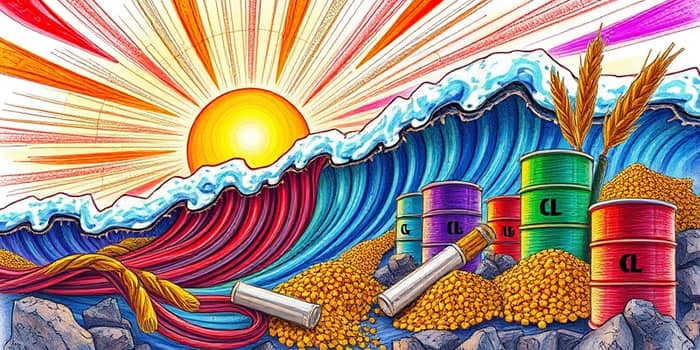
The world stands on the cusp of a once-in-a-generation investment opportunity. As demand for energy, metals, and food rises, commodity markets may enter a prolonged upcycle that rewards strategic participants. This article unpacks the mechanics, history, drivers, and actionable strategies for navigating the next supercycle.
A commodity supercycle is an extended period of elevated prices lasting a decade or more. Unlike ordinary fluctuations, supercycles unfold over 10–20 years, powered by deep-seated shifts in demand and delayed supply responses.
At the core lies a slow supply response: mines and oil fields require 7 to 10 years to move from discovery to production. When demand surges, limited capacity causes prices to accelerate, drawing fresh investment. Over time, new output enters the market, triggering a bear phase as supply catches up.
Since 1900, at least four pronounced supercycles have reshaped global trade and capital flows. Each arose after periods of underinvestment, forcing supply constraints when demand rebounded.
These historical precedents illustrate that boom-bust processes shape markets. Corrections of 20–30% can occur even within bull phases, challenging weak hands and rewarding patient investors.
Several converging trends indicate that we could be entering a new commodity upcycle:
1. Energy transition: The shift to renewables demands massive quantities of copper, lithium, nickel, and rare earths for electric vehicles and grid storage.
2. Population growth and urbanization: Rapid expansion of middle classes in Asia and Africa drives higher consumption of metals, food, and energy.
3. Technological shifts: Digital infrastructure, data centers, and 5G networks intensify demand for key minerals and energy inputs.
4. Underinvestment in supply: Mining exploration spend remains near multi-decade lows at around $11.2 billion, while major oil fields face declining productivity and long lead times.
5. Geopolitical and regulatory pressures: Trade disputes, resource nationalism, and stringent environmental permitting slow new projects.
Investors should consider a mix of direct exposure to resource companies, thematic ETFs, and futures contracts. Look for companies with low production costs, strong balance sheets, and robust ESG frameworks to navigate regulatory landscapes.
By blending strategic patience with tactical agility, investors can harness long-term gains and manage downside risks. Well-timed allocations to resource sectors have outperformed broad markets during past supercycles.
To participate in the commodity supercycle while preserving capital, consider these steps:
Diversify across sub-sectors: Balance exposure between energy, metals, agriculture, and critical minerals to smooth volatility.
Focus on quality: Prioritize companies with low-cost mines, scalable projects, and strong environmental, social, and governance practices.
Use derivatives wisely: Options and futures can hedge price swings but require disciplined risk control.
Stay informed: Track macro indicators like the CRB/S&P 500 ratio (0.15 in late 2023) and World Bank price projections to identify turning points.
As the global economy advances toward net zero and emerging markets grow, the next commodity supercycle could redefine investment landscapes. By understanding the mechanics, learning from history, and adopting practical strategies for risk management, both seasoned investors and newcomers can seize the opportunities that lie ahead.
References













